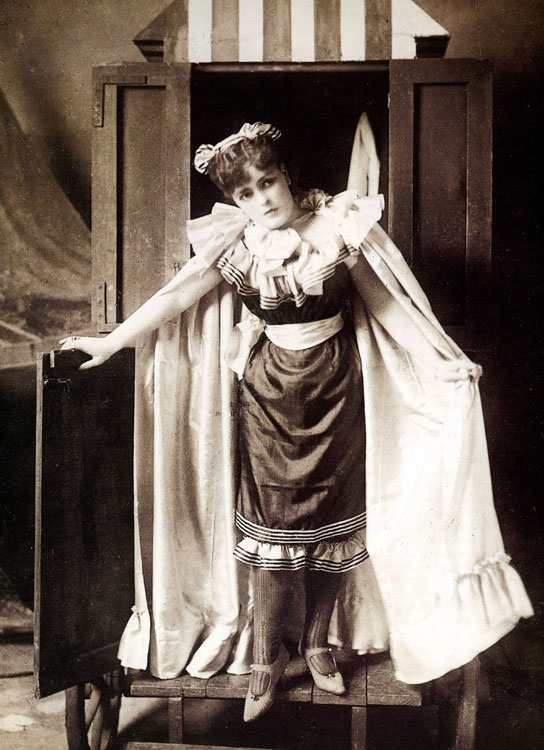Sea Bathing – Victorian Style from A History of EverydayThings by M Quennell (adapted from Secondary Certificate English textbook).
Sea bathing in Victorian times, was not quite the light-hearted amusement that it is today. There was no running down from the hotel to beach in a bath robe, no sunbathing, or lying about on the sands in bathing-dresses after the dip. Everything had to be done in an orderly and extremely decorous manner. Mixed bathing was not allowed anywhere. Men and women each had their separate part of the beach, and they were not supposed to meet in the water.
Bathing clothes were also carefully regulated. Men usually wore simple bathing-drawers and no more, but women were obliged to wear thick, cumbersome serge garments that covered them completely from head to foot. These satisfied the demands of modesty, but they must have been extremely uncomfortable for swimming.
Even thus decently covered, women were not supposed to show themselves on the beach whilst in bathing-attire. They had to wait their turn for the bathing-machine, a sort of wooden cabin on wheels which was drawn right down to the water’s edge by horses. On its seaward side a sort of hood or canopy projected outwards and downwards over the water, completely screening the bather until she was actually in the sea. There was a bathing-woman in attendance, part of whose duty was to dip – in other words, to seize the bather as soon as she emerged and dip her forcibly under water two or three times. This was supposed to be for the benefit of her health, and no doubt it was all right in the hands of the gentle. But most bathing-women were the reverse of gentle, and to be dipped by them must have been a decidedly strenuous form of exercise.
In course of time, however, those ideas changed. The hood disappeared when it was no longer thought shocking for a girl to be seen on the steps pf the machine in bathing-dress. Then towards the end of the century some daring individual conceived the idea of using small coloured tents which could easily be set up and taken down, and which also did away with wearisome waits because they were not hired but were the property of the user.
1. Briefly explain the meaning of each of the following: decorous manner, carefully regulated, cumbersome serge garment, demands of modesty (4)
2. What peril awaited the Victorian bathing ‘belle’ when she stepped from her bathing machine into the sea? (2)
3. What was the main reason for having bathing-machines on Victorian beaches? (1)
4. Briefly list five reasons which must have made bathing unpleasant for women (5)
5. What do the phrases ‘decently covered’ and ‘daring individual’ suggest to you about the writer’s attitude to what they are describing? (3)
6. What was the principal drawback of bathing-machines? (1)
7. What do you learn about the Victorians in this passage? (4)
Total: (20)


